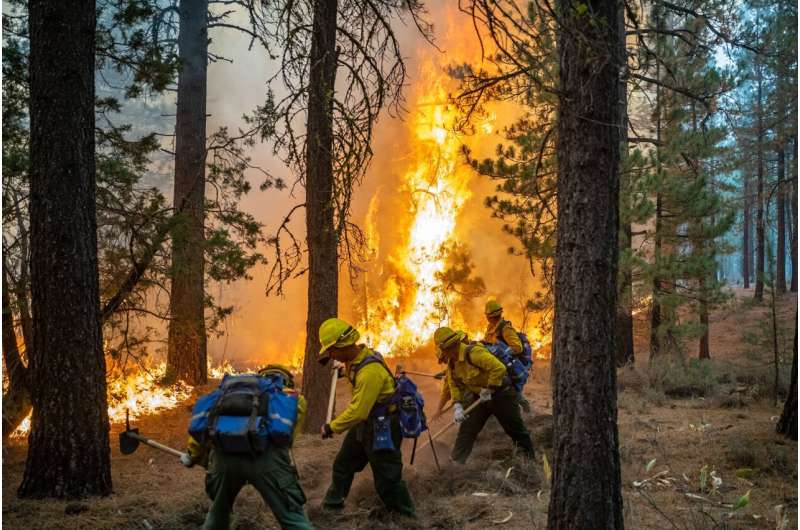This article has been reviewed according to Science X's editorial process and policies. Editors have highlighted the following attributes while ensuring the content's credibility:
fact-checked
peer-reviewed publication
proofread
First comprehensive look at effects of 2020–2021 California megafires on terrestrial wildlife habitat

The only thing constant is change—isn't that how the saying goes? We know that wildlife in western forests evolved with changing habitats and disturbances like wildfire. Each species responds differently, some benefiting from openings, others losing critical habitat.
What we don't know is how increasing fire severity at large scales is impacting their habitat and survival because many species are not adapted to these types of "megafires." Researchers at the Rocky Mountain Research Station set about finding some answers. They summarize their findings in "The 2020–2021 California megafires and their impacts to wildlife habitat," a paper that was published in the Proceedings of the National Academy of Sciences.
Why California and why this time period? In 2020 and 2021, California experienced fire activity unlike anything recorded in the modern record. When the smoke cleared, the amount of burned forest totaled ten times more than the annual average going back to the late 1800s. Nearly half of the forests that burned experienced high-severity fire, killing 75–100% of the vegetation, and much of this fire covered large continuous areas rather than a patchy mosaic.
California's Department of Fish and Wildlife curates a comprehensive wildlife database, mapping the habitat suitability of hundreds of species across the state. Coupling that with Forest Service records of wildfires and some fancy computer footwork gave researchers an opportunity to take a broad look at how these types of "mega-fires" are shaping wildlife habitat within the state.

Jessalyn Ayars, the lead author, said, "Our intent was to take a broad look to gain a better understanding of the impacts of these kinds of fires on wildlife habitat as a whole." She continued, "and since each species is different, this study provides a good jumping-off point for others to be able to focus on a single species of interest or small group of species that share similar habitats."
The fires and habitat studied were mostly located in the Sierra Nevada, southern Cascades, and Klamath mountain regions of California. Researchers looked at more than 600 wildlife species and found that for 50 species, fires spanned 15–30% of the habitat within their range in the state. One hundred species experience high severity fire over more than 10% of their geographic range within California. Sixteen of those species are considered species of management concern, such as the great gray owl, wolverine, Pacific marten, and northern rubber boa.
Previous research shows that some species, such as great gray owls, may benefit from fire in terms of foraging habitat and can be somewhat resilient, but again, the unknown is whether that benefit holds true with this magnitude of habitat change in such a short time.
Some good news is that by looking more closely at some of the details around habitat change by species, scientists learned that these fires are not disproportionately impacting habitats for species of conservation concern compared to wildlife species in general, a finding that suggests that where these species live may serve as refugia for them.
Gavin Jones, senior author, and Ayars' advisor, has conducted research on how proactive forest management can offset risks over the long term of California spotted owl habitat loss from increased wildfire size and severity. Given the impacts of large-scale habitat shifts in a short period of time, coupled with the likelihood that extreme fires will be more common in the future, this new paper adds to the body of research and underscores the importance of increasing the pace and scale of proactive forest management.
More information: Jessalyn Ayars et al, The 2020 to 2021 California megafires and their impacts on wildlife habitat, Proceedings of the National Academy of Sciences (2023). DOI: 10.1073/pnas.2312909120
Journal information: Proceedings of the National Academy of Sciences
Provided by USDA Forest Service




















